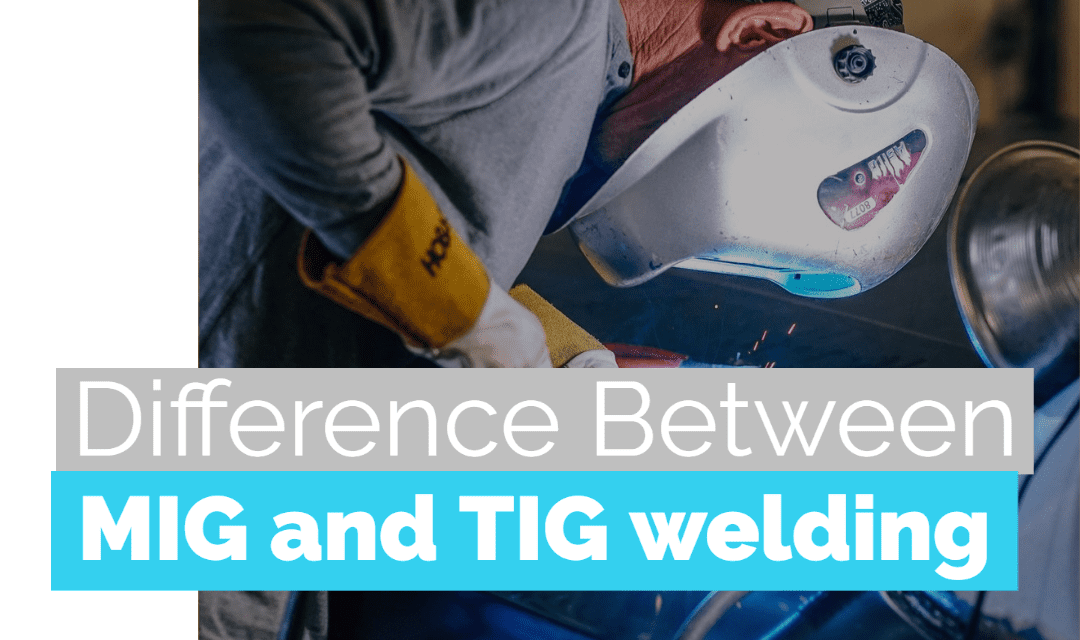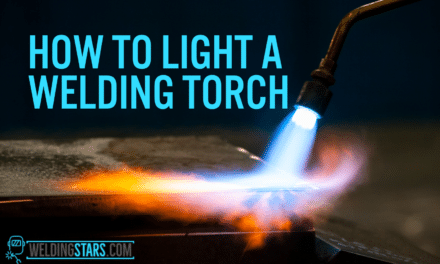Welding is one of the most economical ways that can be used to join metals permanently. It is also one of the only ways you can join two or more metals to make them act as a single piece instead of two separate pieces. Welding is a method that we have found to be vital for the economy, and more than half of the United States gross national product is actually related to the welding industry in some way.
Welders are currently being employed in several different industries, including the agricultural and construction industries as well as mining machinery. They are responsible for a lot of different things within these industries – from the machinery being used to even the textiles.
What Is MIG Welding?
There are many different welding methods that can be employed for different jobs. The MIG welding method is one of them. It is also known as metal inert gas welding and was first developed back in World War II because it was a quick and efficient way to make strong and durable joints.
The MIG welding process involves a continuous solid wire electrode being fed through a welding gun into the welding pool, which then joins the two base materials being used together. Shielding gas is also sent through the gun, and this is used to protect the weld pool from any kind of contamination.
MIG welding is often seen as a highly productive yet low-cost welding process and can be used to weld a variety of different metals and alloys. It also requires much less skill, and there is minimal post-weld cleanup required.
What Is TIG Welding?
TIG welding is also known as gas tungsten arc welding, and the process involves using a non-consumable tungsten electrode to deliver the current to the welding arc. Both the tungsten and weld puddle are protected and cooled with inert gas. The gas that you will typically find used during TIG welding is argon.
TIG welding offers the welder much more in the way of control because the welder can control the heat and amperage with more precision via a foot or thumb remote control switch. The weld is also thin, which allows the welder to maintain even more control over the entire process.
TIG welding is ideal when you have a project that requires more in the way of detail, design, and even curves on the base metal being used because it requires less amperage and can be used on thinner pieces of metal. However, you are still able to switch between thick and thin, which makes TIG welding a very versatile welding process.
MIG Versus TIG Welding
One of the key differences between MIG and TIG welding is the fact that MIG welding uses a continuously fed wire that also doubles as a filler material. TIG welding, on the other hand, uses a non-consumable tungsten electrode as already mentioned and is slowly fed into the weld puddle. However, both of these methods are employed using an electric arc.
MIG welding is a much simpler and more straightforward process and is much easier to learn than TIG welding. You can weld mild steel, stainless steel, and aluminum and the thickness of these metals can vary.
With TIG welding, thinner materials are used instead at a lower heat. It offers a much finer and more delicate way to weld and offers more in the way of versatility for a welder as well because you can choose from different materials. However, it is also a much slower process.
When Should You Use Each Welding Process?
When choosing which of these two welding processes to use, you need to ask yourself a few questions regarding the materials and the project.
How thick are the materials you are using? If you have thicker metal pieces, then MIG welding is going to be an effective option.
What is the electrical conductivity of the metals? If the metal you are using is highly ductile, it will take more time to heat up, which ultimately consumes more energy. If the metal is electrically-resistant, it will heat up faster, and you can weld without any filler material.
Are metals similar? It is not recommended to weld metals that are not similar to each other because you may run into several issues, including a weak bond and corrosion. However, if you need to, you need to choose a technique that supplies the filler material to make the bond.
Difficulty Level
When choosing the TIG welding method, you must remember that you will have the torch situated in one hand and the filler material in the other. This is often very difficult for beginning and inexperienced welders. MIG welding is an easier process and is a much cleaner process.
Project Size
Another thing to consider when choosing between these two methods is the project size. MIG welding is a better option for larger projects that require much thicker metal materials. It also more beneficial for those welding runs that are much longer and continuous.
TIG welds are best suited for smaller projects that require more intricate details and precise and clean welds.
Appearance
Because of the beautiful details and finish, TIG is often applauded for more artistic and ornamental projects because this welding process allows for a more attractive appearance for the final product.
Cost
Another big difference between MIG and TIG welding is the cost that is involved. TIG is a more expensive welding option because of the arc characteristics and advanced waveform shaping that is required.
Components of MIG Welding
The power for MIG welding is typically DC with a constant voltage. The wire feed system is also smooth, which provides an even weld. For this welding method, you must also get the right diameter and composition for the MIG weld.
Components of TIG Welding
The power source for TIG welding can be either AC or DC, and some can switch between the two until they find their preferred current. AC power sources often work much better for aluminum materials, while DC power can provide a stronger arc. You will also find a foot pedal that is used to control the electricity going to the torch. The arc will become hotter as you push the pedal.
Final Thoughts
Ultimately, which method you use depends on the type of project you are working on. Each of these welding methods has their own set of advantages, so depending on the time you are allotted, the money you have to spend, and how clean you want the weld to be, you are now armed with more information that can help you pick between MIG and TIG welding for your next project.





